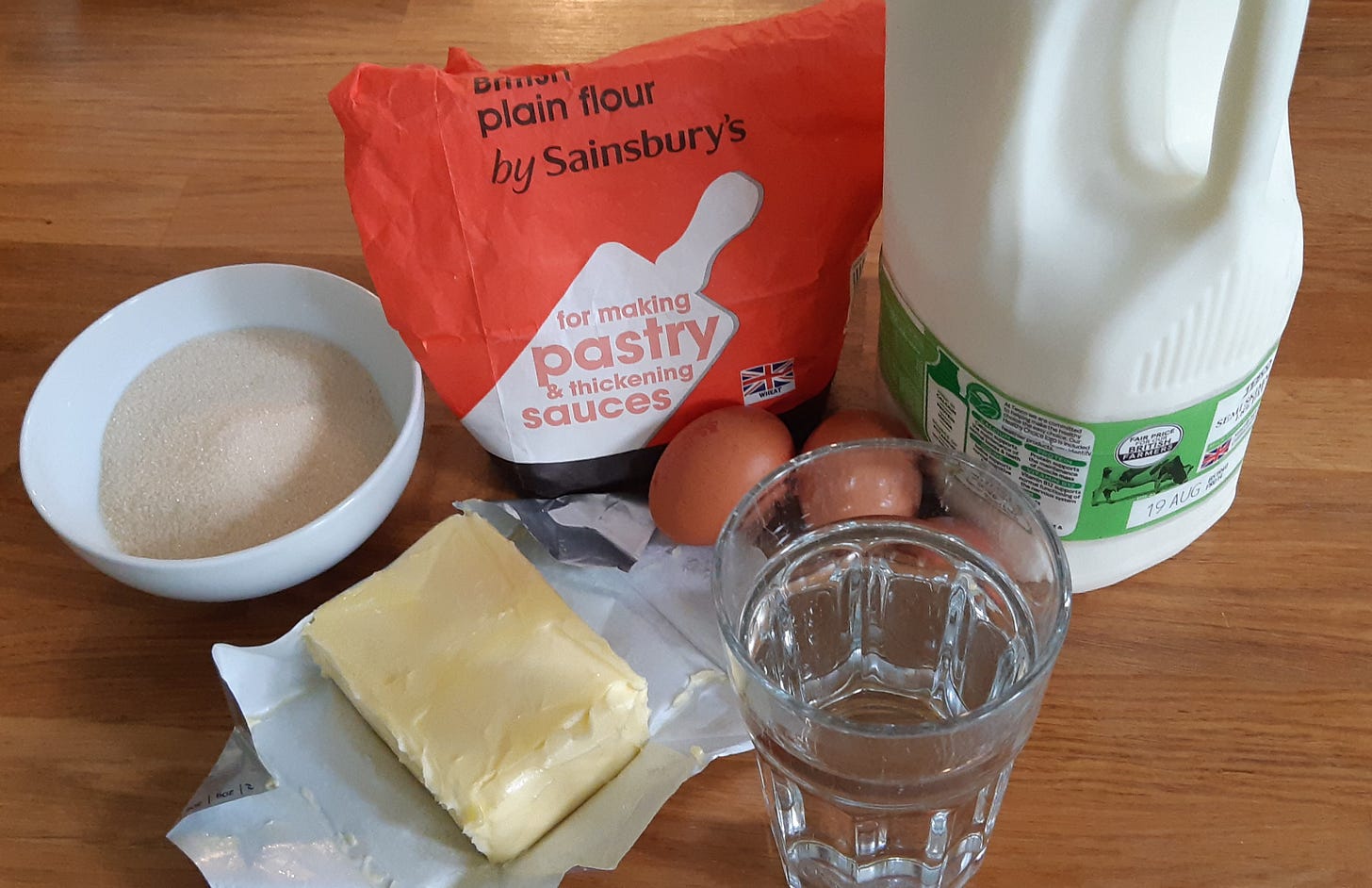If you, or your housemates, or your children or partner, would rather dial Uber Eats than use a can-opener, this blog is for you. If people you know think all food naturally grows in a heat-insulated bag, and is delivered by a young person on an electric bicycle, here’s your essential guide, for you or for them, as to where food comes from. And how you can make it come from there too!
Cooking, baking, food preparation are some of the most fundamental, essential skills in life. If you have the ability to look at an unpromising collection of ingredients in your fridge or cupboard and quickly picture an amazing dinner, you will amaze and delight people wherever you go (as well as eating better and saving money).
It's also one of the most rewarding things you can do for someone else – teach them the basics. Give a man a fish and he will eat for a day; teach a man to fish and he will eat for a lifetime. But teach a man how to make cake and he will have cake every day. And cake is so much better than fish.
But everyone has to start somewhere.
The trouble with ‘just’ serving up great home-cooked food (which of course, I do effortlessly, two or three times a day for my endlessly grateful and entirely functional family) is that there remains an element of apparent subterfuge.
That delicious steaming chilli can’t really have come from those beans, tomatoes and veg, there must have been some kind of shortcut taken or deception involved. The box from that wonderful pie must be around here somewhere. And anyway, who really wants to sit by and watch (or much less get involved in) the enchanting magic I weave each evening? Certainly not my kids.
But kids, cooking is fun! No, come back…
To be fair, I’m not the most patient chef – if something is going to take more than about thirty minutes I’m much less interested in making it; and you can make most worthwhile food in well under an hour anyway.
Anyway, the following is the method I use to enable scales to fall from eyes and to first help that realisation to land that not only is cooking and baking really satisfying, it’s really easy and will also save you a ton of money. Here’s how it works. Get the following items out on a surface or table:
Water
Eggs
Milk
Butter
Sugar
Flour
You can optionally also have oil, oats, raisins and cocoa powder on the table if you really want to go for the culinary jugular. Then it’s just a matter of putting some of these combinations together to show what they make using the following simple equations:
Eggs + Flour + butter + sugar = cake
More flour, less egg = cookies (that’s biscuits if you’re in the UK).
Add milk and you’ve got scones (that’s biscuits if you’re in the US).
Eggs + Flour + Milk = pancakes, or Yorkshire pudding if you’re in the UK. If you don’t have scales to measure your ingredients, just start with half a mug of each ingredient and mix it all together. If you want waffles, use self-raising flour, add a little sugar and lose a bit of the milk.
Flour and butter without the eggs? That’s pastry. Mix it with your fingers, put any kind of filling inside it and chuck it in the oven – you’ve made a pie.
Flour + water = bread. No, really. Well, almost. It’s only slightly more complex than that: get 500g flour, 350 ml water and mix it all together with a teaspoon each of salt and yeast. Leave it in a covered bowl for 8 hours or overnight; then tip it on to a floured surface, leave for another 2 hours, then chuck it in a hot oven for 40 minutes. That’s literally it, and you’ll have the best bread you’ve ever tasted.
What about fresh pasta? Flour + eggs. Pizza dough? Same as bread, just add a bit of oil.
Butter and sugar melted together makes fudge or toffee, depending on what temperature you heat it to. Stir in oats and you’ve got flapjack. Just melt sugar on its own and put a teaspoon of sodium bicarbonate – you’ve got honeycomb.
What if you want to take it to the next level, but there’s not much in the house? Make pastry as above, then mix up eggs & milk (with some cheese) and pour it into the pastry case. You’ve got yourself a quiche (or add sugar instead of cheese for a flan).
It’ll cost you £10 to get all of those items in your cupboard (I say that, it’ll probably be at least £12 by the time you read this). Then you have everything you need to create fantastic things any time you want. For the price of one takeaway.
Now you, esteemed Substack reader, undoubtedly know all this already, and I’m sure you’re rustling up souffles, chateaubriand, home-made sushi and more. But I hope there’s someone in your life that can use this introduction to the most fundamental tenets of baking.
Your grandma knew all this and she probably never used a recipe book. Give some of the above a try this weekend and you too (or someone close to you) can soon be shrugging and saying “What, that? Oh yeah, I made it” while exploding with excitement and pride on the inside.
Buon appetito!






